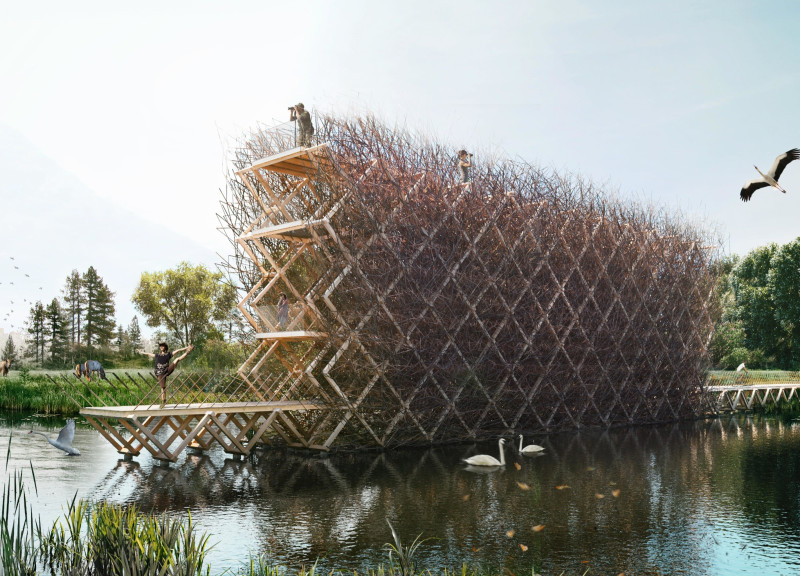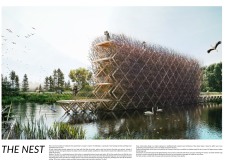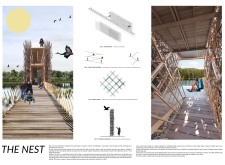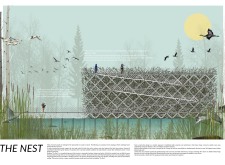5 key facts about this project
The primary function of "The Nest" is to serve as an observation point for birdwatchers who seek to experience the local wildlife up close. As a structure, it is designed to facilitate a range of activities, from passive observation to educational initiatives about local bird species and conservation efforts. Visitors can engage directly with the environment, enjoying views of Pape Lake and its migratory birds from various vantage points within the tower.
The architectural design features a distinctive geometric form characterized by a diamond-shaped lattice structure that recalls the natural design of bird nests. This construction technique integrates materials that are both sustainable and locally sourced, including timber, natural twigs, and steel elements. These materials establish a sense of harmony with the surrounding landscape, utilizing wood for structural support while twigs and branches create a visually interesting façade that mimics the organic form of bird nests. The use of glass further enhances the experience by providing unobstructed views and fostering transparency, allowing visitors to feel connected to both the sky and the landscape.
An important aspect of the design is its accessibility. Ramps provide ease of movement throughout the tower, ensuring that all visitors, including those with disabilities, can navigate the space comfortably. This thoughtful approach to circulation is crucial in making the structure inclusive for everyone.
The unique interactions offered by "The Nest" distinguish it from typical observational towers. The strategic placement of the structure minimizes disruptions to local wildlife, promoting a respectful relationship between visitors and birds. Overhanging elements and hidden terraces offer discreet observation points, allowing birdwatchers to engage with the avian ecosystem without causing disturbance. This intentional design choice underscores the project's commitment to environmental sensitivity and sustainability.
Moreover, "The Nest" actively engages the local community by involving residents in the design process and encouraging ownership over the structure. This community connection adds depth to the project, reinforcing the importance of environmental stewardship and awareness.
In summary, "The Nest" serves as a model of how architecture can embrace and promote ecological sustainability while fostering community engagement. Its thoughtful design showcases the potential for architecture to enhance human interaction with nature without compromising the integrity of the environment. Interested readers are encouraged to explore the architectural plans, sections, designs, and ideas that bring this project to life for a comprehensive understanding of its significance and execution.


























